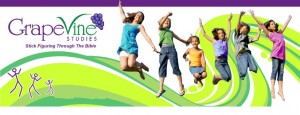 We’ve been using the Grapevine Bible Curriculum, New Testament, & loving it! The idea is that your children draws the stories & lessons from the Bible as they learn the lessons. The drawings are simple little stick figures, but if your children are like mine they’ll enjoy embellishing them with a few extra details!
We’ve been using the Grapevine Bible Curriculum, New Testament, & loving it! The idea is that your children draws the stories & lessons from the Bible as they learn the lessons. The drawings are simple little stick figures, but if your children are like mine they’ll enjoy embellishing them with a few extra details!
They will also write and memorize verses & have weekly reviews. All of which combines together to help your child remember the lessons. In fact, my children’s retention using this curriculum is huge!
This curriculum is made so you can get as much or as little out of it as you want. The Teacher’s Manual comes with information about each lesson so you can pre-study it if you so desire. It’s also suggested you keep a dictionary and concordance at hand incase you need it, but with websites like Dictionary.com & Biblos.com you wouldn’t need to pay for either of those items if you didn’t want to.
You’ll also want to provide your child with a wide range of coloured pencils. The manual also calls for a white board so you can draw the stick figure pictures first, then the students copy them down. They are all very simple to draw and the TM actually shows them so you don’t have to think up what/how to draw on your own. Can I confess that I don’t always draw the pictures thought?
How we use it:
I read the story to them, both from the Bible and telling parts in my own words. I point to the picture in the TM and have them draw each one as I come to that part of the story. Doing it this way means we can take this Bible curriculum anywhere and not have to worry about hauling a whiteboard with us.
Each lesson is very simple, and it’s up to you how much of it you do in a day. The reason this curriculum has lasted us so long is because we started out doing one lesson a week. In the TM it explains that you can do one lesson per week or one per day depending on your needs and desires.
To do one lesson each week we broke it down like this: Monday: Review of previous lesson. Tuesday: Timeline Review. Wednesday: Read new lesson & do page one. Thursday: Do page two of new lesson. Friday: None, OR start the rotation again.
However, we decided to pick up the pace and start doing more lessons in a week so we could move on to the Old Testament. Now we do one lesson per day, but we still save the review of that lesson for the next day to help reinforce what we previously did. This means our schedule now looks like this: M-F: Review previous lesson, timeline review, new lessons.
The Break Down:
- Let’s take a look at the Student Workbook and how it all breaks down! The book begins with a New Testament blank Timeline. This is basically an overview lesson. They discuss each “story” or event in only a few basic sentences while your child sketches everything on the timeline. The idea being that the children get an idea of what they’ll be learning.
- Next you have lessons. Each lesson has a Biblical reference, you can choose to read the summarized version from the Teacher’s Manual or you can grab your Bible and read it from there. I’ve been known to do both if I feel like a specific part of the story I want my children to know was missing from the summarized version. I even summarize it in my own words at times.
- Each lesson is a two page spread, with generally about 8 pictures to draw. The pictures are always based on the lesson, and, as previously mentioned, are always pre-drawn in the TM. At the end of each lesson comes the Lesson Review.
- Lesson Reviews have a few questions {4-8 generally} about the lesson you just learned. I like saving these for the next day to make sure the kids still remember the previous lesson. After the Lesson Review is a Memory Verse to go with each lesson.
- We add all memory verses to our Memory Box to work on memorizing them through that simple method. We also say them at lesson times to help enforce why we chose to memorize this verse.
- Next up you’ll find a page with Character/Event Cards & a space to write out your memory verse. I will confess that we haven’t filled out the cards. The idea is that you write down the key factors from the person or event so that you can use them as quick reference points. My children retain the events and stories well enough that we’ve chosen to skip this part of each lesson. I’ll also confess we don’t always write our our memory verse as we might be working on something else for copywork.
- Then you come to the Timeline Review. This is where you’re meant to remember the three previous lessons you learned before jumping into the next one. You simply draw your stick figures on the timeline and jot under it what they are. There’s also a space for writing out the two previous memory verses. We always do the timeline reviews, but sometimes I’ll just have the children tell me the verse rather then write it.
- Last, but not least, every 6 lessons is a Big Review. When we come to a Big Review it’s the only thing we do that day for Bible. My kids love Big Review Days. We turn them into trivia style games.
What We Love:
- My kids love everything about this curriculum. Anytime I move away from using this as our main Bible there are cries of, “When do we get to do drawing Bible again?”
- I love that it’s simple to teach! It did take a little bit of time to “figure it out”, but once I found my groove we were set!
- It’s non denominational. It was not written from the view point of any one religion. You can read any story/event from your own personal Bible getting that view point.
- I also really love that my kids adore this Bible Programme. Let’s be honest, anything that gets my kids excited about the Bible is usually top notch in my book!
- I was also really excited that I could buy this programme as a download from either Grapevine directly or from Currclick.com. This is a big factor for international homeschoolers. It completely eliminated the need to pay for shipping! It’s also nice if you have more then one student using the student book.
- If you just want to “try” this programme you can even get one of their smaller studies like The Birth Of Christ, The Life of Ruth, or The Resurrection of Jesus.
What we don’t love:
- While I love that I can buy this product as a download it’s big. I’m talking 200+ pages for students & the same for the Teacher’s Manual. Now, the downside there is the amount of paper and ink you’re going to use when you print it out. For US based homeschoolers, I suspect buying the hardcopy would be a wiser and more economical choice. This is not the fault of the programme, as they do offer hard copies of their books.
- I’m also going to give a few thoughts that might be factors for some people.
- It did take a little bit to find my feet with this curriculum. I don’t fault the programme, you are encouraged to contact them if you need any help. I don’t think it’s a difficult programme to use, but, like most curriculums, it took me a bit to find my feet.
- If your children do not like to draw they probably won’t enjoy this programme.
- If you’re nervous about drawing for your kids you might feel turned off by Grapevine Bible, but may I just say that you do not have to draw! Stick figures are really simple, and if you don’t have the confidence to draw them, just show your children the pictures directly located in the Teacher’s Manual. We do this like when we school outside, at the library, or in the park.
Bottom Line:
We love this programme. My kids retain so much information that I know we’ll be sticking with this programme for quite a while!
Kendra lives in Tasmania Australia with her husband, the Man From Down Under, two curious boys, a dog, & a bird that constantly talks back. Creator, and avid user, of the Homeschool Book Of Days & The Nature Game she can be found retelling tales from The Land Down Under over at the Aussie Pumpkin Patch.
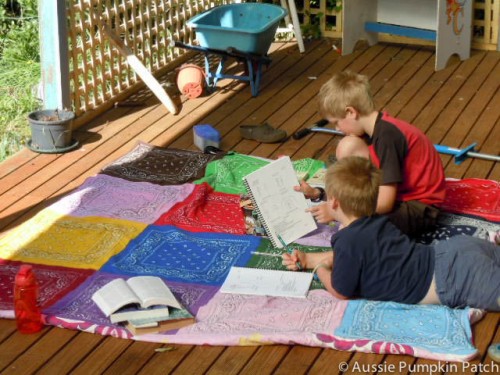
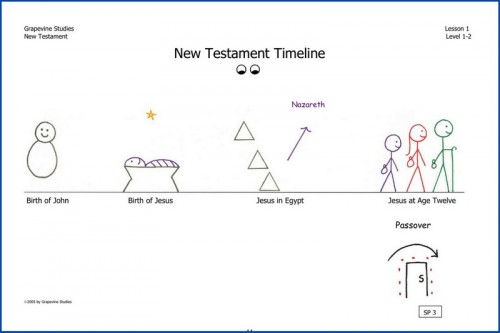
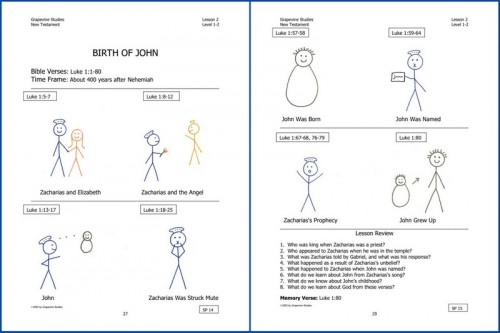
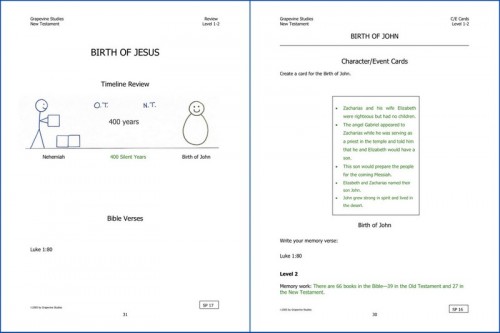
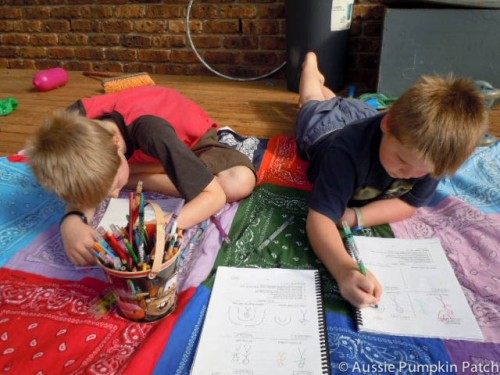
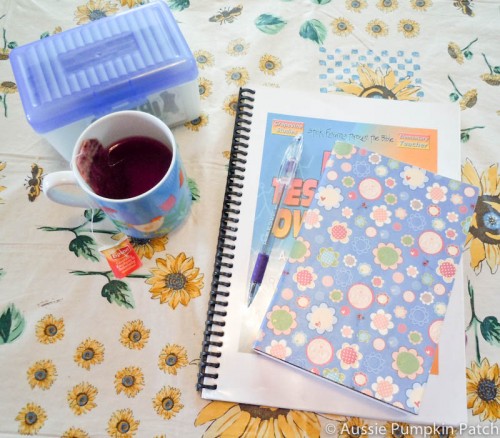

Leave a Reply